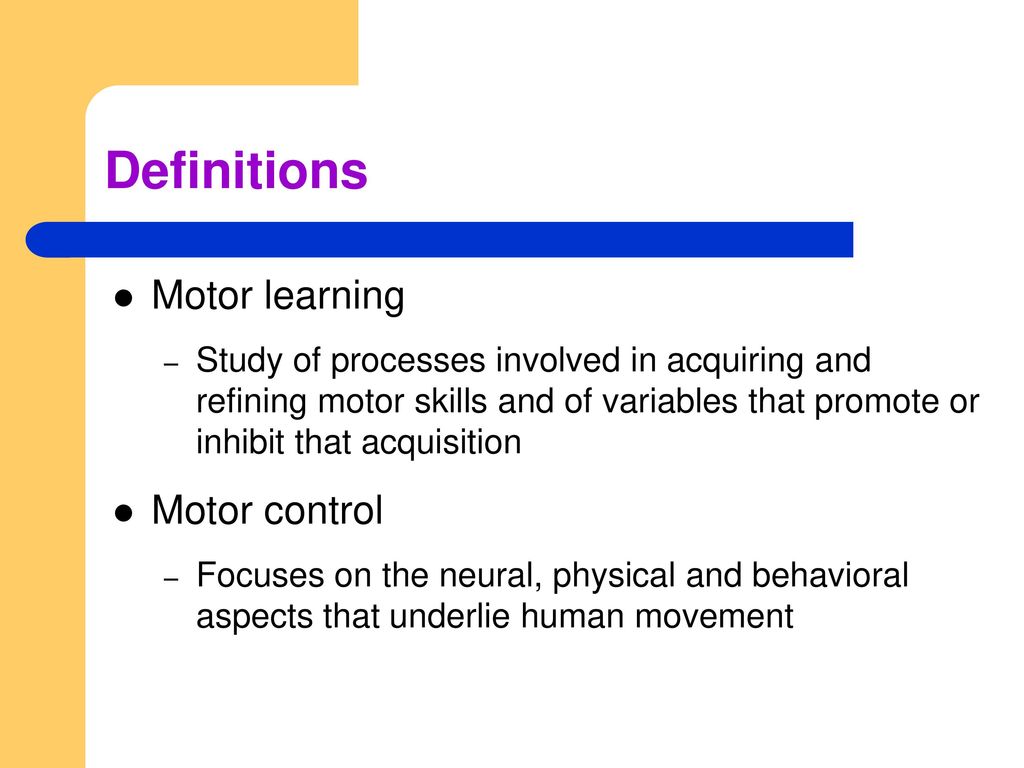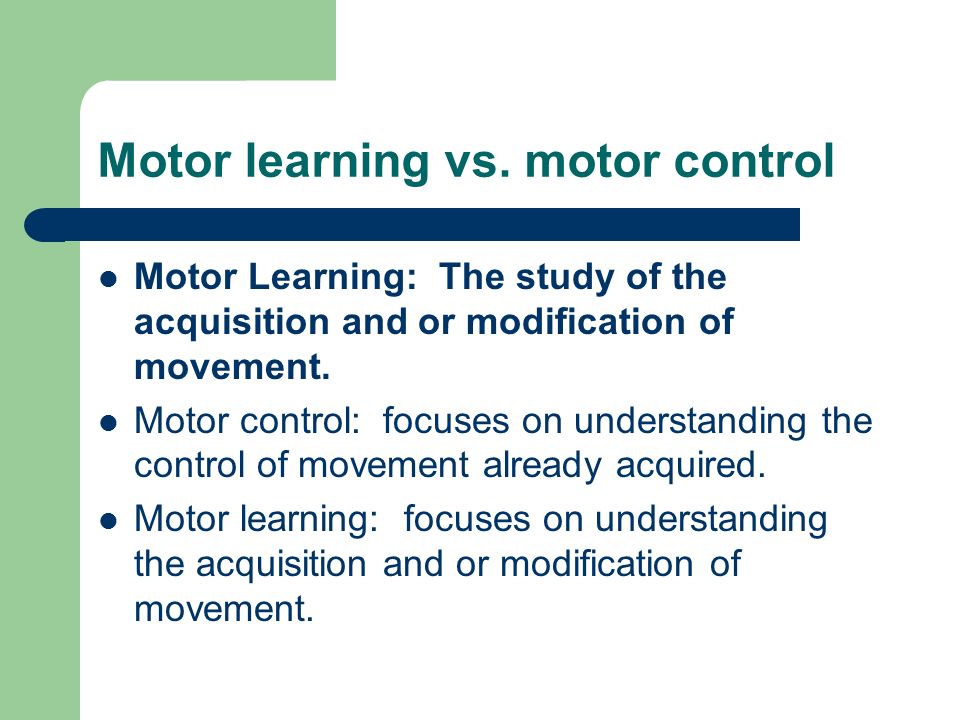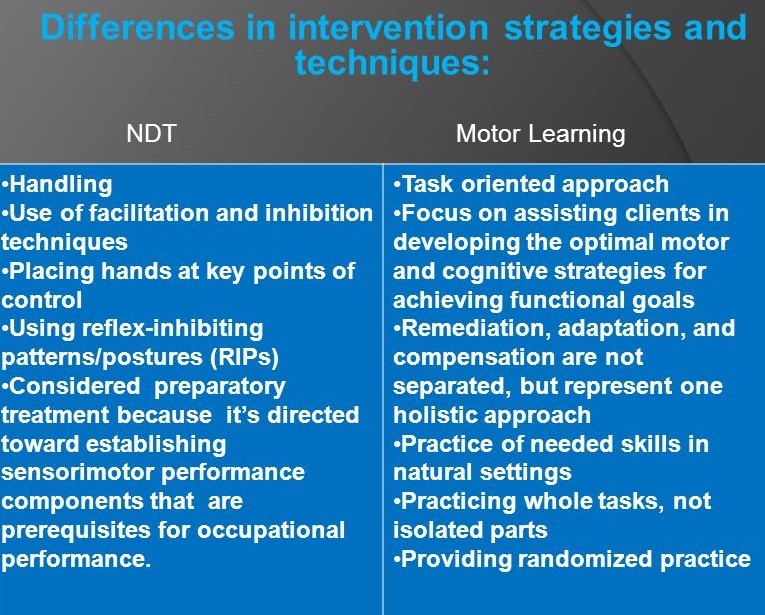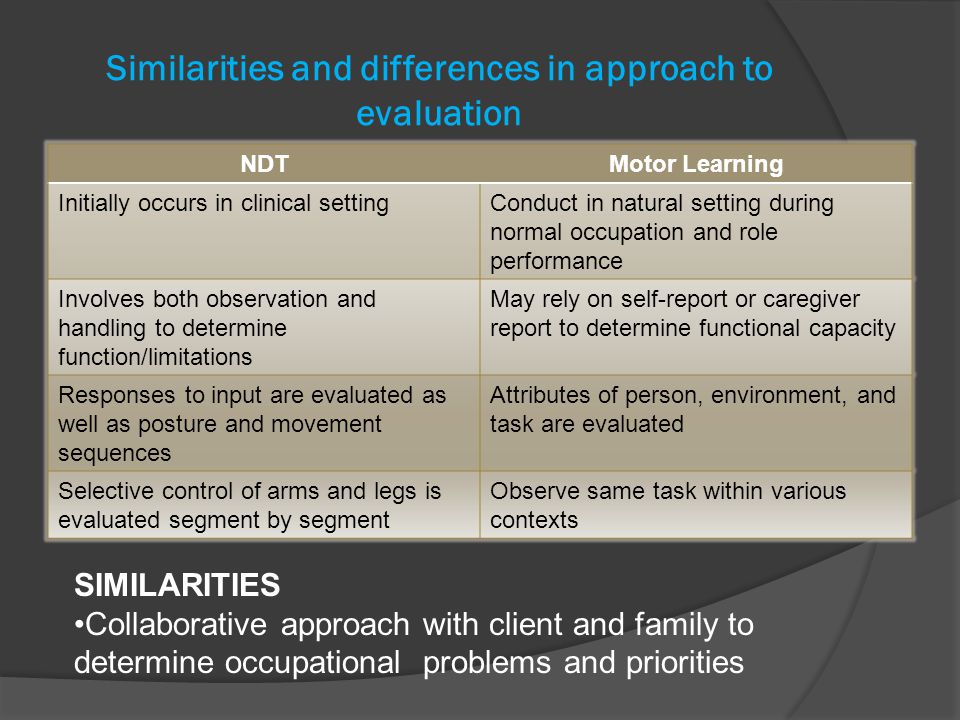 …………………….
……………………. 
This chart will compare and contrast two treatment approaches as it applies to a particular patient. The two approaches considered are Neurodevelopmental Treatment, a motor control approach, and the motor learning approach.
The patient’s name is Wally. He is a 68 year old African American male who has been married for 30 years. He works as a caretaker for a church and lives in an apartment in the church basement. Wally’s medical history includes a 9 year history of hypertension and a history of ulcers. He had retinal surgery 6 years ago. He has no history of psychiatric illness.
Current Diagnosis
Wally’s current diagnosis is left cerebrovascular accident with right hemiparesis, dysarthria, and depression.
Concerns
Wally is concerned that his wife will not be able to take care of him and that he will have to go to a nursing home. He also cannot work, so he is worried that he and his wife will have to go on welfare and will not be able to afford their apartment.
Mental and Physical Status
Wally appears very neat, clean and well groomed. He presents with the following symptoms:
-Inconsistent eye contact, especially when approached from the right side
-Motor ability is impaired, unable to walk
-Flaccidity in right arm and leg
-Right facial droop
-Slurred speech and difficulty finding words
-Depressed affect since onset of the CVA
-Confused formal thought
-Perceptual deficits including visual disturbances, difficulty crossing midline, difficulty with figure-ground discrimination, and severe right side neglect
Treatment Approaches

The following chart will compare neurodevelopmental treatment (NDT) and the motor learning approach as they apply to Wally’s course of treatment.
| Area of Treatment | NDT | Motor Learning |
| Overall focus of treatment | Movement progresses from head to foot, proximal to distal, large movements to small movements. Addresses stability before mobility. Primary goal is to regain control over primitive reflexes for skilled voluntary movement. |
A general rehabilitative approach to all forms of movement abnormalities and disorders. Holistic or systems approach. Directly relates to specific task performance. Primary goal is to restore functional movement using meaningful tasks to increase motivation to continue with treatment. |
| Specific disabilities and treatment goals | Disabilities from an NDT perspective: -Loss of selective movement control in Wally’s right arm. -Abnormal muscle tone (flaccidity) on affected side. -Poor inhibition of primitive reflexes and/or nonfunctional movements. Treatment goals from an NDT approach: -Refine tone in Wally’s affected right side. -Regain movement in affected right side. -Strengthen fine motor skills and overall stability. |
From the contemporary task perspective, function is defined with the context of specific tasks. Skilled movements are performed with a gradual increase in degrees of freedom. Evaluation should be conducted during occupational and role performance in natural settings. -dressing at home Observe Wally performing functional tasks in various contexts. -transfer wheelchair to bed, toilet to wheelchair, etc. The case implies that Wally might work on the following: -muscle strengthening -crossing midline -establishing independence during ADLs, including dressing, bathing and transferring in natural settings -practicing whole tasks, not isolated parts of tasks Therapist should provide feedback and encourage self evaluation and error detection |
| Activities of Daily Living | Handling and practice during ADL tasks Discourage compensation Encourage Wally to use his affected side during ADL tasks, including bathing, dressing, feeding and transfers. Focus on a few common routines or tasks, such as transfers, bathing and dressing. -Wally has confusion of formal thoughts during ADL routines, so practicing a few tasks repeatedly, he will be able to remember and master these tasks. |
Focus on function during ADL tasks Areas identified as functional: -ADLS – -Social participation – although Wally has some speech difficulties, he is able to communicate and will continue to regain speech and language abilities. Areas identified as impaired: -Return to work – Wally is unable to perform all the tasks necessary to return to his prior occupation. -Mobility – Wally is unable to ambulate. He will eventually become mobile through the use of his wheelchair as he continues to strengthen his transferring skills. |
| Recommendations for Wally’s wife | Make sure Wally’s wife is aware of what Wally is capable of. Have Wally’s wife encourage Wally to use his affected side more to strengthen bilateral movement. Tell Wally’s wife to place items closer to Wally’s affected side to induce spontaneous movement of the affected side. Have Wally help with chores around the house to strengthen his affected side. |
Increase Wally’s motivation Have Wally perform purposeful and meaningful activities |
| Motivational Issues | NDT assumes that training and practice will produce improvements without intentional effort of the client’s part. Therefore Wally’s participation in activities that are meaningful to him will be his motivation. | Motor learning frame selects tasks that are challenging and meaningful to the client, and that are identified by the client themselves. We would ask Wally what types of things most important to him and go from there. |

1. Both NDT and Motor Learning Theory rely on the plasticity of the brain to rewire and make new connections.
2. Both approaches use a collaborative approach with the client and family to determine occupational problems and priorities.
| NDT | Motor Learning | |
| General Differences | -Occupational dysfunction is characterized by the inability to control one’s own motor movements. -Goals of therapy include trunk stability, increased independence in self-care, and restoration of safe mobility. -NDT focuses on establishing sensorimotor components that are prerequisites for occupational performance. |
-Three stages of function: cognitive, associative, and autonomous stage. Function defined within context of specific tasks. -The goal is to restore functional movement by developing optimal motor and cognitive strategies. -Recovery is reached when the person is restored to their previous level of abilities as before the accident. |
| Evaluation | -Initially occurs in a clinical setting. -Involves both observation and handling to determine function/limitations. -Responses to input are evaluated as well as posture and movement sequences. -Selected control of arms and legs is evaluated segment by segment. |
-Conducted in a natural setting during normal occupation and role performance. -May rely on self-report or caregiver report to determine functional capacity. -Attributes of person, environment, and task are evaluated. -The same task is observed within various contexts. |
| Patient Motivation | NDT assumes that training and practice will produce improvements without intentional effort of the client’s part. | Motor Learning frame selects tasks that are challenging and meaningful to the client. These tasks are identified by the client themselves. |
| Treatment Strategies and Techniques | -Handling -Use of facilitation and inhibition techniques -Placing hands at key points of control -Using reflex-inhibiting patterns/postures (RIPs) -Considered preparatory treatment because it’s directed toward establishing sensorimotor performance components that are prerequisites for occupational performance. |
-Task oriented approach -Focus on assisting clients in developing the optimal motor and cognitive strategies for achieving functional goals -Remediation, adaptation, and compensation are not separated, but represent one holistic approach -Practice of needed skills in natural settings -Practicing whole tasks, not isolated parts -Providing randomized practice |
| Changes in Environment and Task Demand | Task demands and home environment must be changed based on the patient’s limitations. | -Early stages of learning: Feedback is focused on movement outcome and the critical features of the task and environment (not on motor performance) -Later stages: Clients are encouraged to self-evaluate their own movement performance and outcome by focusing on feedback from their own body and environment |
| Role of Adaptation and Compensation | -Discouraged compensation with one-handed strategies for task performance as counterproductive because it encourages learned neglect -Compensation continues to be discouraged, and use of hemi side encouraged for performing activities of daily living. | -Remediation (establish or restore), adaptation, and compensation are not separated, but represent one holistic approach. |
Reference:
Motor Control and Motor Learning Frames of Reference